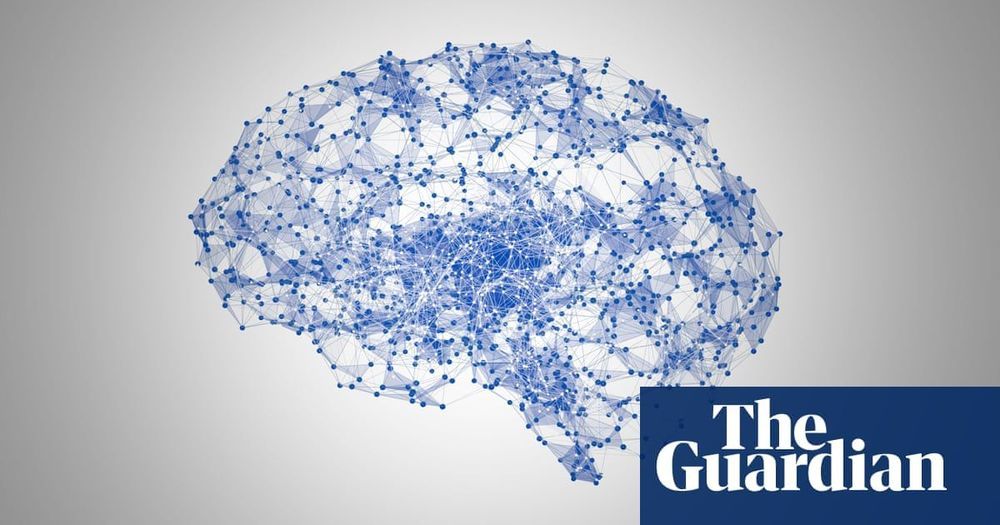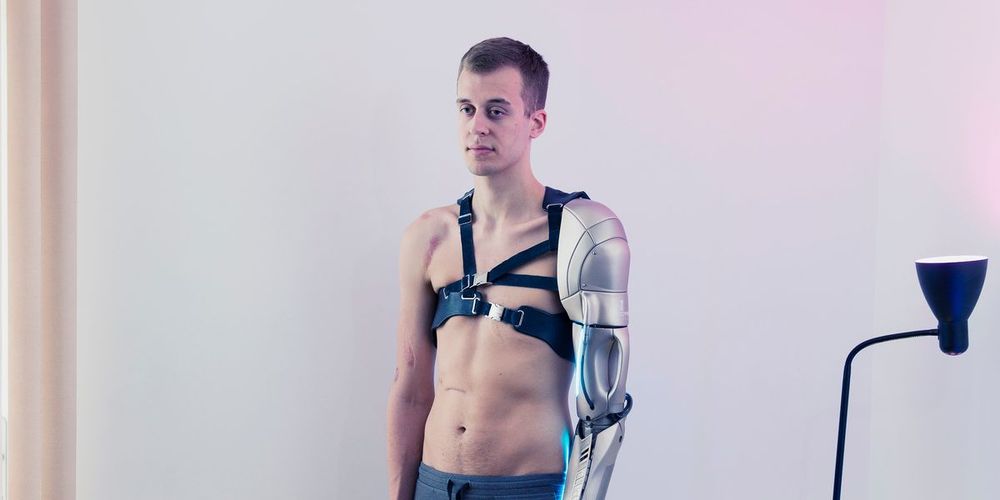The ‘bionic’ girl who doesn’t eat, rarely sleeps and didn’t even feel pain.
Category: cyborgs – Page 70
Super Ethan Gets A Bionic Arm!
Meet 7-year-old Ethan, who received his bionic Hero Arm yesterday at the Hanger Clinic in Aurora, Illinois. Ethan contracted sepsis shortly after his second birthday and he was given a five per cent chance of survival, but the superhero in him fought and survived. Stay strong, Ethan, and may the Force be with you! ✨ 😍 💪 #EthanStrong
Scientists can 3D print insect-like robots in minutes
3D-printed ‘flexoskeletons’ make it possible to build a soft robot in less than two hours without extravagant costs.
Cyborg computer chips will get their brain from human neurons
If you enjoyed this article or found it informative and wish to share it, you can do so from the following link: https://www.facebook.com/383136302314720/posts/564255487536133/
A.I. has already gotten to almost sci-fi levels of emulating brain activity, so much so that amputees can experience mind-controlled robotic arms, and neural networks might soon be a thing. That still wasn’t enough for the brains behind one ambitious startup, though.
Cortical Labs sounds like it could have been pulled from the future. Co-founder and CEO Hong Wen Chong and his team are merging biology and technology by embedding real neurons onto a specialized computer chip. Instead of being programmed to act like a human brain, it will use those neurons to think and learn and function on its own. The hybrid chips will save tremendous amounts of energy with an actual neuron doing the processing for them.

Creating Superman (and woman): Who benefits from human enhancement?
Research involving bowhead whales has suggested that it may one day be possible to extend the human lifespan to 200 years.
From the demigods of Greek mythology to the superheroes of 20th century comic books, we’ve been intrigued by the idea of human enhancement for quite a while, but we’ve also worried about negative consequences. Both in the Greek myths and modern comics and television, each enhanced human has been flawed in some way.
In the area of lifespan enhancement, for instance, Tithonus, though granted eternal life, shrunk and shriveled into a grasshopper, because his immortal girlfriend Eos, forgot to ask Zeus to give him eternal youth. Achilles, while super strong and agile, had a weak spot at the back of his heal, and Superman would lose his power if exposed to “kryptonite”. As for Khan’s people, their physical superiority, both physical and mental, made them overly ambitious, causing a third world war that nearly destroyed humanity in the Star Trek backstory.
Using genetic modification, nanotechnology, bionics, reconstructive surgery, hormones, drugs or any combination of these approaches, real-life human enhancement is looking ever more achievable. As with the fictional examples, the idea of enhancement being a double-edged sword will surely remain part of the discussion. At the same time, though, because enhancement means mastering and manipulating human physiology and the basis of consciousness and self-awareness, the road to enhancement will be paved with advances beneficial to the sick and the disabled. This point must be at center stage when we weigh the pluses and minuses in various enhancement categories, especially physical capability, mental function, and lifespan.

Scientists develop AI that can turn brain activity into text
“We are not there yet but we think this could be the basis of a speech prosthesis,” said Dr Joseph Makin, co-author of the research from the University of California, San Francisco.
Writing in the journal Nature Neuroscience, Makin and colleagues reveal how they developed their system by recruiting four participants who had electrode arrays implanted in their brain to monitor epileptic seizures.
These participants were asked to read aloud from 50 set sentences multiple times, including “Tina Turner is a pop singer”, and “Those thieves stole 30 jewels”. The team tracked their neural activity while they were speaking.

Meet 2020’s Real Life Cyborgs
Over the last five years, London-based photographer David Vintiner and art director Gemma Fletcher have been documenting the subculture of transhumanists across Europe, Russia and the United States. Their photobook I Want To Believe, due out this spring, explores these enthusiasts’ achievements and motivations.
Dispatches from the transhumanist movement.

NEWS FROM SOFIC: Special Operators Wearing Ultralight Version of ‘Iron Man’ Suit
Photo: EPNAC
TAMPA, Fla. — When Special Operations Command set out to create what would be popularly known as the ‘Iron Man suit’ seven years ago, developers assumed that the state-of-the-art in body armor would not improve much over the next few years.
That assumption led the command down a development path that would actually make the Tactical Assault Light Operator Suit resemble the comic book hero with heavy armor from head to toe and a power system and exoskeleton needed to help the operator move in the bulky suit.
Artificial muscle
This super strong may bring us closer to lifelike robots.
This super strong artificial muscle may bring us closer to lifelike robots.